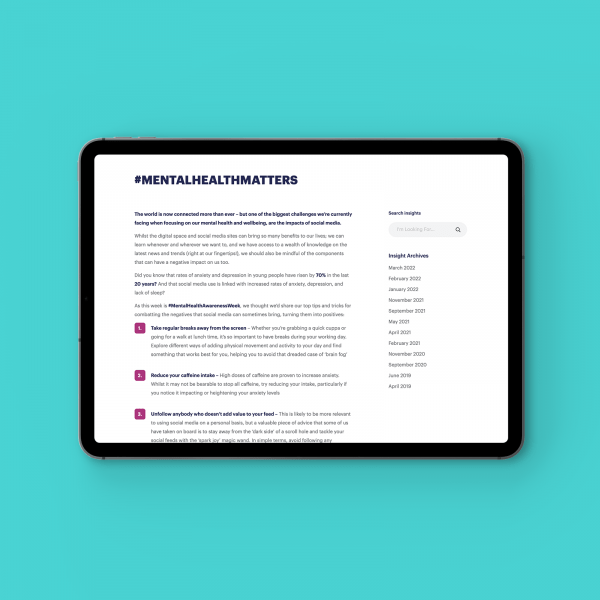In the words of former US President JFK “The world is changing, the old era is ending, the old ways will not do.” In other words, adapt or get left behind.
In the tech industry this certainly resonates – there is not a more dynamic industry in the world. GPT-3 is adding to this evolution, as a neural network machine learning model, trained using internet data, to produce copy instantly.
It’s capability of generating human-like text while offering applications, including language translation and language modelling, is impressive. Generating texts for applications such as chatbots is provided by its sister software, ChatGPT. Astonishingly, ChatGPT reached one million users in its first five days, to put that in perspective, it took Spotify five months. It is no wonder that Microsoft are in talks to invest £10bn in the phenomenon!
The potential impact to copy creation is huge, let’s look at the pros and cons of GPT-3, and consider the effect it’s going to have in the near future – and ask, is the copywriter a thing of the past?
How GPT-3 can be of assistance
GPT-3 is an auto-regressive language model that generates human-like text in an instant. Its language processing provides sophisticated outputs for all sorts of copy pieces including blogs, social posts, guides and more.
After research on this new ‘craze’, we believe one of GPT-3’s mains strengths are in its ability to help inspire copywriters. Firstly, it can help with creatives ideas, providing you with headlines if you give it a few key words. It is reported that this feature could be embedded in Microsoft features in the not-too-distant future.
Furthermore, it can help in the brainstorming phase of writing. As an example, and to prove our point, we asked it to provide us with “Five topics to cover in a blog about GPT-3”. While the output was by no means perfect, it did provide food for thought. In addition, if you are struggling for inspiration regarding the writing of social posts on certain topics, it will provide you with as many examples as you like to help put you on the right track.
Other functions include the fact that it can generate key word clusters, something that is beneficial, and is provided at speed.
What are the limitations of GPT-3?
It is important to stress that the application is in its infancy and there are obviously limitations, limitations that in some instances will never be eradicated, and should keep the copywriter’s heart beating for a good while yet.
As marketing experts, we see the major flaw is its ability to talk personably, authentically, and uniquely – after all, the art of content writing is to speak to the human experience and tell a compelling story. However, that is not to say that all text from GPT-3 sounds exactly the same. You are able to stipulate voice and tone and it can achieve this to some extent. We tried asking it to write as if it was from William Shakespeare, and it did!
It is also worth noting that as GPT-3 usage continues to soar, the importance of your content having that personable feel we talk of is only going to become even more important, be it social posts, blogs, or any other form of content. The amount of content available is already vast, and it’s only going to increase. Providing quality, relatable, and unique content in the tone of voice your brand requires is never going to have been more important. A LinkedIn user joked only recently that it could now be worthwhile to put a typo on a social post, just to confirm with users that it is an actual person writing to you, not GPT-3 or ChatGPT!
It is also not capable of supplying references. It draws its ‘knowledge’ from a wide variety of online sources and pieces them together. So, you should remember to fact-check the data provided to you, as it is a model that predicts the most likely text. We have noticed many errors when asking it questions about various famous people, this will no doubt improve over time, but it is only ever as good as the data it can pull from. The chief technology officer at ChatGPT’s creator Open AI was recently quoted as saying that the software may on occasion “make up facts” before stating that “it’s important for OpenAI and companies like ours to bring this into public consciousness in a way that’s controlled and responsible.”2
In addition, it should also not be used for detailed and ground-breaking work, this isn’t possible as it is only accessing information that already exists. Overtime this will beg the question, will ChatGPT be sourcing knowledge from earlier ChatGPT or GPT-3 written copy? And how will we trust the accuracy of what we read?
So, will GPT-3 be taking the jobs of copywriters?
We thought it only fair to query GPT-3 directly on the topic. We put in the following request: Write me 50 words on whether GPT-3 will be taking the jobs of copywriters. It got back to us in around 2 seconds…
“GPT-3 has the potential to change the way copywriters work, but it is unlikely to take away the jobs of copywriters. GPT-3 is an AI-powered tool which can generate text based on a prompt. While it can produce impressive results, it cannot replace the creative and strategic approach of a professional copywriter. Copywriters have the ability to think outside the box, to come up with creative solutions to difficult problems and to tailor their messages to the needs of their target audience. GPT-3 can generate impressive text, but it cannot replicate the same level of insight and understanding that comes with having a human copywriter. GPT-3 may make copywriters’ jobs easier in some ways, but it will never be able to fully replace them.”
What an honest bot GPT-3 is! So, copywriters do not need to be seeking a different line of work, if anything they should be excited by the tool and already be looking to use it for their benefit.
To sum up, JFK also once said “Change is the law of life. And those who look only to the past or present are certain to miss the future.” Embrace the change, resistance is futile.




